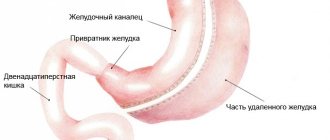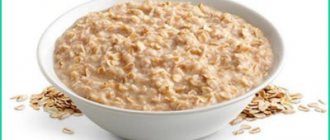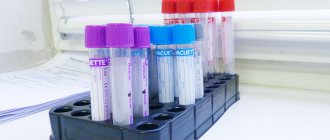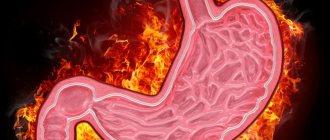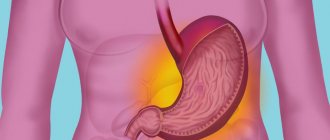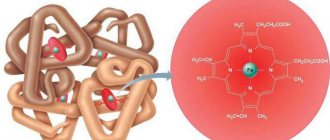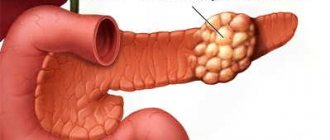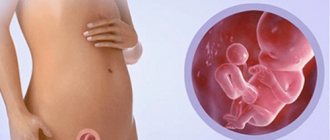The development of many diseases of the gastrointestinal tract can be associated with destabilization of the level of stomach acid, so you need to constantly maintain normal acidity, and also know what acid is normal in a person’s stomach. If you develop unpleasant symptoms indicating various pathologies, you should immediately seek help from a doctor. More details about stomach acidity will be discussed in this article.
What acid is in the human stomach?
Composition and functions of gastric juice
Gastric juice is a colorless liquid with an acidic pH that is produced by the gastric mucosal epithelial cells.
The composition of gastric juice includes substances such as:
- hydrochloric acid;
- enzymes (pepsin, gastrixin);
- hormones (gastrin);
- slime;
- minerals (sodium chloride, potassium chloride, ammonium chloride, phosphates, sulfates);
- organic components (urea, glucose, acetic and lactic acids).
During the day, about 2000 ml of juice is produced in the stomach of an adult healthy person.
Due to the constant production of hydrochloric acid, the body manages to maintain an acidic environment in the stomach cavity. Therefore, an increase or decrease in acidity in the stomach directly depends on the amount of hydrochloric acid in the gastric juice.
The main task of this enzyme is to break down proteins into small chains, which facilitates their absorption in the small intestine. Hydrochloric acid also takes part in the metabolism and absorption of iron, destroys pathogenic microorganisms that penetrate the stomach, and regulates the acid-base balance in the body.
Hydrochloric acid is produced by the parietal cells of the stomach, which are located on the fundus and body of the stomach.
The following factors may affect the production of hydrochloric acid:
- activity of the autonomic nervous system;
- rough and irritating food;
- acidity level in the stomach;
- motor activity of the stomach walls;
- the amount of gastrin and cholecystokinin-pancreozymin in gastric juice.
The presence of at least one of these factors can increase acidity in the stomach.
What increases acid levels
A person may have a genetic predisposition to high stomach acidity. Then hyperacid gastritis develops at a young age, regardless of proper nutrition.
Often, pH values shift due to regular dietary violations. The following have an irritating effect on the stomach:
- any types of carbonated drinks;
- hot and cold foods;
- fatty food;
- poorly chewed food;
- coarse fiber foods;
- sweets;
- abuse of foods with sour taste;
- tendency to overeat;
- regular fasting;
- taking certain medications.
Bad habits can also provoke an increase in acidity. Smokers tend to increase stomach pH. Regular consumption of alcohol (even weak alcohol and in small quantities) has an irritating effect on parietal cells.
Reasons why stomach acidity increases
All the reasons that cause hypersecretion of hydrochloric acid, and, accordingly, an increase in the level of acidity of juice in the stomach, can be grouped into two groups - external and internal.
External factors include the following:
- psycho-emotional shock;
- neuroses;
- lack of sleep;
- unbalanced and unhealthy diet (fatty, fried and spicy foods, smoked foods, fast food, irregular meals, overeating, strict diet);
- bad habits (smoking, alcohol abuse);
- taking medications that affect the gastric mucosa (non-steroidal anti-inflammatory drugs, hormonal agents, cytostatics);
Internal factors include factors such as:
- chronic stomach diseases (peptic ulcer, cancer, gastritis);
- hyperproduction of the hormone gastrin (pancreatic tumor, increased activity of the stomach glands that secrete gastrin);
- hormonal changes in the body (pregnancy, puberty, menopause);
- metabolic disorders.
Only by identifying and eliminating the cause that provoked the increase in acidity in the stomach can a positive, and most importantly, lasting effect of treatment be achieved.
Factors that provoke changes in acidity
Let's look at the main reasons that contribute to increased acidity:
- improper or unbalanced diet;
- excessive consumption of smoked, fried or spicy foods;
- the presence of bad habits that negatively affect the gastrointestinal tract (smoking and alcohol abuse);
- consequences of taking potent medications. First of all, this applies to analgesics, antibacterial and anti-inflammatory drugs that irritate the gastric mucosa.
Poor nutrition is one of the possible causes of increased acidity
Since only metabolic processes can reduce the level of hydrochloric acid in the stomach, this most often happens to older people, whose metabolic processes in the body slow down with age. The most common causes of low stomach acidity include the following factors:
- the development of an inflammatory process affecting the gastrointestinal tract;
- poor digestibility of food consumed;
- atrophy of the gastric mucosa;
- hormonal imbalance;
- poor metabolism (metabolism).
Inflammatory processes lead to a decrease in acidity
Most of these factors are influenced by the patient’s lifestyle, in particular his diet. Therefore, to maintain the digestive system and the entire body in a healthy state, doctors recommend reviewing your diet.
Symptoms of high stomach acidity
Patients with increased stomach acidity may complain of the following:
- heartburn of a constant or periodic nature, especially after eating;
- belching acid;
- bitter taste in the mouth;
- intestinal colic;
- frequent constipation;
- hunger;
- the appearance of a white coating along the midline of the tongue;
- nausea, sometimes with vomiting, which brings relief;
- aching and nagging pain in the epigastrium 2-3 hours after eating.
If you have the above signs of high acidity, then you should not delay contacting a specialist. Timely diagnosis and treatment in this case will help avoid serious health consequences.
Diagnostics
A gastroenterologist is involved in the diagnosis and treatment of diseases that are accompanied by increased acidity in the stomach.
The algorithm for examining a patient with excess acidity in the stomach is as follows:
- collection of complaints;
- collection of anamnesis of illness and life. The specialist is trying to find out the presence of the above external factors that could lead to excess acidity in the stomach;
- examination (bloating, coating on the tongue);
- palpation (pain on palpation in the epigastrium);
- general blood and urine analysis;
- blood chemistry;
- blood sugar test;
- fibroesophagogastroduodenoscopy (FEGDS), which allows you to visually assess the condition of the gastric mucosa and take material for histological examination);
- tests to determine the bacteria Helicobacter pylori in the stomach;
- ultrasound examination of the abdominal organs;
- biopsy and histological examination of the obtained material.
Causes of high acidity and characteristics of the disease
In addition to dividing gastritis according to the acidity of the stomach, a general classification of the phases of the disease is also made:
- Acute gastritis (sometimes a temporary manifestation without subsequent complications);
- Chronic gastritis (damage to the gastric mucosa periodically causes exacerbation phases).
Let's start describing the characteristics of the disease with the acute form. In these cases, increased acidity of the gastric cavity and its internal damage are caused by external irritants. As a rule, the causes of acute hyperacid gastritis are:
- Serious food poisoning, including chemicals (corrosive gastritis);
- Transference of long-term infectious diseases (fibrinous gastritis).
In these cases, the patient's condition may rapidly deteriorate to the point of becoming critical, with severe pain and inability to eat anything. As a rule, timely elimination of poisoning and depletion of gastric resource - flushing the gastrointestinal tract, restoring the flora, acidity and wall structure with the help of medications - allows you to neutralize damage and prevent the disease from becoming chronic.
Chronic hyperacid gastritis is a consequence of a less active, but constant irritant effect on the walls of the stomach. Moreover, in the initial stages of the disease, the patient experiences only periodic discomfort in the iliac cavity, which is easily confused with ordinary heartburn. As a rule, at the time of contacting a gastroenterologist, internal injuries have already reached the stage when a cyclic reaction starts and the chronic stage sets in, and complex treatment is necessary.
The main types (aka causes) of chronic hyperacid gastritis:
- Bacterial (general classification type B, caused by the bacterium Helicobacter Pylori); Chemical (type C of the general classification), according to the source it is divided into:
- Reflux gastritis (acid emissions into the stomach from the intestines and gallbladder);
- Medicinal (disorders caused by long-term use of aggressive medications).
Methods for determining acidity in the stomach
Acidity in the stomach can be determined using special laboratory tests.
- Express method. There are special test strips (Acidotest, Gastrotest) that allow you to instantly determine the acidity in the stomach. To do this, you need to dip the strip in the urine and after 2-3 minutes evaluate the result on the scale that is printed on the test package. This method has low efficiency and is therefore rarely used.
- Probing of the stomach is fractional. A rubber probe is inserted into the patient's stomach, through which samples of juice are taken from the bottom, body and pylorus, after which the material is delivered to the laboratory, where the acidity is determined. This method also has its own errors.
- pH-metry of the stomach. A probe is inserted into the stomach, which is equipped with pH sensors. Using such sensors, you can measure acidity in different parts of the stomach. This method is considered the most accurate.
Normally, the acidity in the stomach should be between 1.5 and 2.0 pH.
Complications
There is no point in leaving a problem without proper attention. Not only because of constant tormenting heartburn, acid belching, and other unpleasant symptoms. In its advanced form, the pathology can lead to the formation of ulcers on the mucous membrane, internal bleeding, and esophageal cancer. In addition, irritable stomach syndrome can cause bronchial asthma if stomach acid rises high and, along with breathing, penetrates the bronchial tree, irritating its mucous membrane.
Article on the topic: What is reflexology and what methods are used in neurology
Often in such patients, the gums become inflamed, tooth enamel suffers, and the process of stone formation in the kidneys begins. If you ignore the prescribed diet and other doctor's recommendations, the problem can worsen dramatically. The most common possible complications include:
- stomach ulcer;
- chronic esophagitis;
- duodenal ulcer;
- duodenitis;
- achalasia;
- cicatricial stenosis of the esophagus;
- chronic gastritis.
Treatment of high stomach acidity
Acidity in the stomach can be normalized with the help of modern antacid medications. But you need to understand that any medicine can only be prescribed by a specialist, since self-medication can cause irreversible harm to health.
The most effective drugs that are used for excess stomach acidity are the following:
- Gastrocepin;
- Phosphalugel;
- Rennie;
- Ranitidine;
- Omeprazole;
- Pantoprazole.
Diagnostics
Gastroscopy is considered the traditional and most accessible method for diagnosing disorders of the functionality of the digestive tract. The study is carried out using a flexible tube and a monitor attached to its end. The method helps to study in detail the condition of the esophagus, stomach, and intestines. At the same time, there are situations when gastroscopy does not give a clear idea of the problem, then one cannot do without such studies as:
- Intragastric pH-metry. The analysis is necessary to establish the pH level, detect acid reflux, reflux of bile into the esophagus and individual control over treatment. To conduct the study, a thin probe equipped with sensors is inserted through the patient's nose. With this device, a person must spend the entire day, noting meals and rest in a horizontal position in a diary. Gastroenterologists compare the results obtained with the norm.
- High resolution esophageal manometry. This study helps to establish the cause of acid reflux from the stomach into the esophagus, assess the contractile activity of the ventricular valves, and intestinal motility. A probe is inserted through the patient's nose and asked to take a horizontal position. During the procedure, the person is asked to drink water in small sips. The doctor monitors data in real time on a computer and makes an assessment of how water moves through the esophagus.
- Impedancemetry of the esophagus. The method is used in combination with those listed above. It helps to clarify the results, determine the frequency and height of acid throws.
When making a diagnosis, the doctor must make sure that the existing symptoms are not signs of an ulcer or other diseases of the gastrointestinal tract. For this purpose, gastroenterologists often prescribe additional instrumental diagnostic methods:
- Fibrogastroduodenoscopy (FGDS) is an analysis that allows you to visually determine the condition of the mucous membrane of the esophagus, intestines, and stomach.
- Ultrasound of internal organs (abdominal cavity, retroperitoneal space, kidneys, liver).
- X-ray examination
- Urine, blood, and other tests for Helicobacter pylori.
Review of drugs for the treatment of high acidity
Gastrocepin
The drug Gastrocepin
This drug is available in the form of tablets and solution for injection, the active ingredient of which is pirenzepine - a substance that blocks muscarinic receptors and reduces the secretion of hydrochloric acid.
Gastrocepin is used for stomach diseases that are accompanied by high acidity (peptic ulcer, gastritis).
This drug is contraindicated in persons with allergies to its components, as well as with severe renal impairment and paralytic intestinal obstruction. In addition, Gastrocepin is not recommended for use by children, pregnant and breastfeeding women.
Gastrocepin is taken 2 tablets (50 mg) twice a day half an hour before meals.
Cost of the drug: Gastrocepin 25 mg 50 tablets – 270-430 rubles.
Phosphalugel
The drug Phosphalugel
Phosphalugel belongs to antacid drugs and is a gel consisting of aluminum phosphate, pectin, sorbitol and agar-agar.
The main indication of the drug is stomach diseases that are accompanied by excessive acidity (gastritis, stomach ulcers, gastroesophageal reflux). The drug can also be used in complex therapy of intestinal infections, poisoning and diarrhea.
Phosphalugel is contraindicated in persons who are intolerant to aluminum phosphate and other components of the drug. Can be used in children and pregnant women as prescribed by the treating doctor.
Phosphalugel is prescribed to adults 1-2 sachets two or three times a day two hours after meals. For children, a single dose of 1-2 teaspoons is recommended.
The average cost of the drug is 230 rubles per package (20 sachets).
Rennie
The drug Rennie Rennie is an antacid drug with a gastroprotective effect, the active ingredients of which are magnesium and calcium carbonate.
Rennie tablets are available in menthol and orange flavors. The mechanism of action of the drug is to neutralize hydrochloric acid, thereby reducing the acidity in the stomach cavity.
Rennie is widely used for stomach diseases that are accompanied by excessive acidity, as well as for heartburn of various natures.
Rennie is contraindicated in patients with allergies to magnesium and calcium carbonate, severe renal failure and hypercalcemia. Rennie tablets can relieve heartburn in pregnant women.
Adults and children over 12 years of age are recommended to dissolve 1-2 tablets for symptoms of excess stomach acidity, but the daily dose should not exceed 16 tablets.
The average cost of the drug is 250 rubles per package (24 tables).
Ranitidine
Ranitidine belongs to a group of drugs that block histamine H2 receptors. The drug is widely used in the treatment of gastric ulcers, since, by reducing acidity, it creates a favorable background for the healing of ulcers and erosions.
Ranitidine is not recommended for use by pregnant and nursing mothers, children under 14 years of age, patients with renal failure and persons with allergies to the components of the drug.
The dose is selected individually by the doctor. In most cases, patients are prescribed 1 tablet (150 mg) twice a day. The duration of treatment is also determined by specialists and averages 1-2 months.
The average cost of the drug is 60 rubles per package (20 tables).
Omeprazole and Pantoprazole
Both drugs belong to the group of proton pump inhibitors.
Omeprazole and Pantoprazole
The active substance of Omeprazole is omeprazole, and Pantoprazole is pantoprazole sodium sesquihydrate.
Both drugs inhibit the functioning of the glands that secrete hydrochloric acid by blocking the proton pump of the parietal cells of the gastric mucosa.
Omeprazole and Pantoprazole are used in the treatment of peptic ulcers, hyperacid gastritis, gastroesophageal reflux, and are also included in the treatment regimen for Helicobacter pylori.
These drugs are contraindicated in persons with hypersensitivity to their components and in children under 12 years of age. Can be prescribed to pregnant women.
Omeprazole is prescribed 1 tablet (20 mg) in the morning an hour before breakfast.
Pantoprazole is taken one hour before meals, 1 tablet (20 mg) once a day.
Average cost of drugs:
- Omeprazole 20 mg 30 tablets. – 80 rubles;
- Pantoprazole 20 mg 28 tablets. – 210 rubles.
All patients suffering from high stomach acidity are prescribed a diet.
Treatment
Treatment of high stomach acidity has several directions, the combination of which is determined for each patient individually. Highlight:
- Diet correction.
- Antacids.
- Proton pump inhibitors.
- Prokinetics.
- Aids and recommendations.
For those patients whose problem is caused by the consumption of certain foods, there is no need to take tablets for high stomach acidity. It will be enough for them to balance their diet and adhere to some restrictions. To improve your well-being, you can take folk remedies that reduce the acidity of gastric juice.
Diet
In order to prevent the appearance of unpleasant symptoms due to increased stomach acidity, for many people it is enough to eliminate or significantly limit a number of foods and drinks. Among them are:
- Fresh vegetables and fruits.
- Pickles.
- Spices.
- Smoked and fried foods.
- Sour juices and fruit drinks.
- Fermented milk products.
- Alcohol.
- Carbonated drinks.
Following these recommendations allows you to restore the normal digestion process and eliminate the amount of free acid. Even in the early stages of gastritis, the disease can be completely eliminated without the use of medications.
It is worth noting the fact that with the help of some folk remedies you can effectively reduce acidity, while they are completely safe. One such remedy is milk. It has an alkaline environment, which quickly neutralizes excess acid.
There is no better way to reduce stomach acidity at home than drinking baking soda. Sodium bicarbonate powder is present in every housewife's kitchen. It can be taken orally as an aqueous solution or a dry substance.
It is worth remembering that this product is suitable only for rare uses. Its long-term use may have consequences associated with trauma to the mucous membrane by chemical reaction products.
In addition, it is worth remembering that it is important to eat on a schedule, since the body begins to produce gastric juice even before a person begins to eat. Eating meals at the same time will allow you to use gastric juice with maximum benefit for digesting food.
Antacids
The most common medications that reduce stomach acidity are antacids. These medications contain substances that react chemically with hydrochloric acid, neutralizing it.
Today, there are two groups of antacids - absorbable and non-absorbable. The difference between them is that those absorbed during a chemical reaction form compounds that can enter the bloodstream, causing a general reaction in the body.
But non-absorbable ones do not have such an effect, which makes it possible to reduce the number of contraindications and side effects to a minimum. Such drugs to reduce stomach acidity are widely used today in gastroenterology.
In addition, the difference between these groups is that they have different rates of onset of the therapeutic effect and the time it lasts. Absorbable drugs can quickly reduce the amount of acid, but this effect is extremely short-lived.
Non-absorbable ones take longer to act, but a decrease in stomach acidity occurs after 15-30 minutes. Accordingly, a person needs to wait until his condition returns to normal.
The most common representatives of this pharmacological group are:
- Rennie.
- Gastal.
- Gaviscon.
- Almagel.
- Maalox.
All non-absorbable drugs that reduce gastric acidity are allowed to be taken even during pregnancy or breastfeeding, as well as for children over 6 years of age. These drugs cause side effects exclusively from the digestive tract. Most often, they affect the stool.
When taking such a medicine for high stomach acidity, a person should understand that it only eliminates the symptoms. To fully treat the disease, you will need to take other medications.
Proton pump inhibitors
These drugs can eliminate the causes of increased stomach acidity - hyperactivity of the glands. They inhibit their secretory function, thereby reducing the amount of hydrochloric acid released.
If antacids can be taken on their own for a short period of time, then these substances are best used after a doctor’s prescription, as they have a number of contraindications and serious side effects.
The main representatives of pump pump inhibitors are:
- Omeprazole.
- Esomeprazole.
- Pantoprazole.
They can be produced under various trade names, and also contain auxiliary agents aimed at eliminating the cause of peptic ulcer disease - Helicobacter Pylori. But, despite this, the effect of taking them will be unchanged.
Prokinetics
Most often, the discomfort caused by a hyperacid state is associated with irritation of the lower part of the esophagus. In order to normalize the movement of food through the digestive system, it is necessary to use prokinetics.
These medications will not help normalize the acid level of gastric juice, but will prevent the backflow of contents with an aggressive environment into the esophagus.
The most famous representative of this group of drugs is Motillium. It normalizes muscle contractions of the walls of the intestines and stomach, which completely eliminates the risk of food moving back.
Folk remedies
There are many folk remedies for normalizing the pH of the gastric environment. How to reduce stomach acidity using folk remedies should be learned from relevant specialists. You need to consult a herbalist or traditional medicine doctor.
Independent use of traditional methods can have the same consequences for a person as taking medications.
Some folk remedies for high stomach acidity are of plant or organic origin. That is, they can cause allergic reactions. It is this feature that requires mandatory consultation with a doctor.
Despite the fact that each person is responsible for his own health, a medical specialist should be involved in eliminating signs of increased stomach acidity. Self-medication is not recommended, since the symptoms can be eliminated, but the problem will remain, which can even cause cancerous tumors.
Treatment with folk remedies
You can get rid of heartburn and other symptoms of high acidity at home using improvised means. It should be remembered that in order to avoid the development of complications, any independent treatment should be agreed with the attending physician. The best folk recipes for high acidity:
- Chamomile. Brew 2 tsp. dry herbs in 250 ml of water, leave for a couple of hours, then strain. Take this dose half an hour before meals three times a day for 7-10 days.
- Baking soda. Stir in ½ tsp. in 200 ml of warm water and drink at once. Use the product only for severe symptoms.
- Carrot juice. Drink 1/2 cup of freshly squeezed carrot juice in the morning on an empty stomach for 14 days.
- Flax seeds. Pour 1 tbsp of water into a glass. l. flaxseed, cook for 5 minutes. Infuse the mucous solution for 2 hours, then take 1 s. l. after meals 4 times a day until the condition improves.
Effects of medications on increased acidity
To quickly cope with the problem and prevent negative effects on the mucous membrane of the organ, special medications are used. Only the doctor selects them based on the patient’s condition.
Drugs that reduce stomach acidity have several effects in the form of:
- slowing down the functioning of sections in the digestive tract in which hydrochloric acid is produced;
- an increase in the amount of mucus secreted in the stomach;
- binding of hydrochloric acid components contained in gastric juice.
The main goal is to prevent injury to the walls of the gastrointestinal tract. Each category of medications has a specific spectrum of effects. Therefore, only a gastroenterologist should prescribe them. You need to see a doctor when you begin to experience pain in the abdomen, burning and itching in the esophagus.
Signs of impaired stomach acidity in humans
High acidity is an excess of hydrochloric acid. It has a negative effect on the stomach and destroys the protective shell of its walls. With high acidity, a person can get gastritis, ulcers, etc. Symptoms:
- pain between meals;
- heartburn;
- belching;
- constipation;
- There is a tongue with a gray coating.
Low acidity levels mean improper functioning of stomach cells, which affects the development of infectious processes. Symptoms:
- smell from the mouth;
- dull pain after eating;
- upset or constipation;
- severe cramps;
- problematic skin;
- bloating;
- weight loss;
- weakness of the body.
Diet for low stomach acidity: menu
Above we gave some recommendations regarding nutrition, they also apply to low acidity. And the main thing is to give up bad habits and unhealthy food. You can also adjust the diet below at your discretion, depending on your personal preferences.
The first day:
- Breakfast. Oatmeal for such a disease will also be an ideal solution. You can cook it with either water or low-fat milk. Scooped egg and milk tea
- Lunch. You can also have a snack with a banana, and also some grapes
- Dinner. Chicken and noodle broth, boiled rice with butter and fish (steamed), compote
- Afternoon snack. Baked apple with honey
- Dinner. Lazy cottage cheese dumplings with sour cream and herbal tea
Second day:
- Breakfast. Semolina pudding with your favorite jam and a cup of coffee (optional with milk)
- Lunch. Low-fat cottage cheese with berries (or sour cream)
- Dinner. Vegetable soup with meatballs, lazy dumplings, tea or compote
- Afternoon snack. Ryazhenka or yogurt
- Dinner. Unsalted buckwheat with steamed cutlets, tea with chamomile (it has a general positive effect on the functioning of the stomach)
Diet for low stomach acidity
Day three:
- Breakfast. Steamed omelette and black tea. If desired, you can add milk
- Lunch. Rusks with jelly
- Dinner. Beef with vegetables, in tomato sauce. Fresh fruit compote
- Afternoon snack. A glass of kefir
- Dinner. Chicken broth with vegetables, tea
Day four:
- Breakfast. Treat yourself to pancakes with cottage cheese or jam, coffee
- Lunch. Banana
- Dinner. Pumpkin soup (or other vegetables), puree with meatballs, compote
- Afternoon snack. Tea with crackers
- Dinner. Boiled fish with vegetables
Day five:
- Breakfast. Cheesecakes with sour cream, tea or coffee with milk
- Lunch. Baked apple with honey, jelly
- Dinner. Vegetable soup without meat, millet porridge and cutlet
- Afternoon snack. Drinking yogurt and dried fruit as a snack
- Dinner. Parsley omelette, chamomile tea
Products for low stomach acidity
Day six:
- Breakfast. Two soft-boiled eggs, herbal tea
- Lunch. Rye bread, kefir
- Dinner. Soup with beef and any cereal except pearl barley. Also, pumpkin puree
- Afternoon snack. Marshmallow or marmalade with tea. But a small amount - 1-2 pieces. If you’re not full, it’s better to snack on some fresh lingonberries
- Dinner. Rice with meat
Day seven:
- Breakfast. Steamed oat flakes with berries or dried fruits, coffee
- Lunch. Bread (yesterday's) with butter and a slice of cheese, tea
- Dinner. Chicken broth, mashed potatoes with boiled vegetables, compote
- Afternoon snack. Galette cookies with honey and herbal tea
- Dinner. Steamed fish with vegetables
Diet for gastritis with high acidity
If you diagnose the disease and prescribe the correct treatment, you can forever get rid of such a problem as high acidity. Diet in this case is the most effective remedy. You can make up your own diet, as there are many foods that can relieve the symptoms of gastritis. However, you need to know the basic characteristics of the products that make up such a diet. These should be warm, soft, crushed dishes that, with their chemical composition, cannot irritate or scratch the walls of the stomach.
Overeating is extremely harmful to the stomach, since excessive stretching of its walls and the need to secrete large amounts of gastric juice can only aggravate existing problems. It is better to eat often, but in small portions. Eating before bed is also prohibited; it is better to organize your last meal 4-5 hours before going to bed.
Increased acidity can be a thing of the past if you stop drinking alcoholic beverages and quit smoking. Also, do not test your stomach with stale foods, sour soups, rotten vegetables and bitter juices.
Stressful situations also have a detrimental effect on the treatment process for gastritis. It is better to always be in a good mood, smile more and have fun. Apathy, irritability, isolation can only reduce the effectiveness of treatment.
Chewing food well will help the stomach spend less energy digesting it. And reducing the amount of protein in the diet (fatty meats, milk, lard) will help get rid of problems such as high acidity. Treatment and a properly formulated diet are the first step to a successful result.
Overcoming a disease such as gastritis with high acidity is possible only if the patient wishes to follow the necessary rules. The combination of high-quality drug supervision and conscientious adherence to diet is a direct path to getting rid of stomach diseases.
Prevention
To protect your stomach, avoid a host of unpleasant symptoms and prevent relapse, doctors strongly recommend adhering to the basic rules of prevention:
- Follow your diet. Avoid fried, salty, spicy foods. Do not snack “on the go” or “dry”.
- Stop smoking, drinking alcohol, spend more time outdoors or play sports.
- Learn to manage your emotions, avoid nervous breakdowns and emotional overstrain.
- Visit your doctor regularly for a preventive examination and report immediately if any unpleasant symptoms appear.
Dietary recommendations
For gastritis treatment to be successful, you must adhere to some nutritional recommendations:
- You should eat 5-6 times a day. Breakfast, lunch and dinner should be at the same time.
- Products are stewed, baked or boiled. It is forbidden to eat fried and fatty foods, pickles, marinades and canned food. The menu does not include dry snacks on the run.
- Maintain drinking regime. Half an hour before meals, you should drink 1 glass of water or herbal infusion.
- Before going to bed, doctors advise drinking a cup of low-fat kefir or yogurt.
These recommendations must be followed at all times. Failure to follow simple rules leads to re-exacerbation.
Diet
Drug treatment for high stomach acidity will not be effective unless the diet is adjusted. The purpose of the diet is to eliminate dyspeptic disorders and reduce the acid factor. To reduce the excitability of the stomach, secretion stimulants (alcohol, smoked foods, carbonated drinks, coffee, mushrooms, broths), as well as irritants of the mucous membrane (marinades, spicy, salty, hot, fatty foods, seasonings, spices) are excluded from the menu. The gentle regime includes split meals in small portions, which promotes rapid digestion of food.
Permitted and prohibited products
Diet with high acidity of gastric juice includes lean meat, vegetables without coarse fiber, and well-cooked cereals. Table of allowed products:
| Vegetables, greens | Fruits, berries | Meat products | Dairy products, eggs | Confectionery |
| Zucchini, cauliflower, carrots, potatoes, beets, pumpkin, parsley, lettuce, fennel, celery. | Bananas, apricots, peaches, apples, raspberries, strawberries. | Rabbit, chicken, turkey, veal, beef liver, beef tongue. | Kefir, curdled milk, sour cream, cream, milk, cottage cheese, chicken and quail eggs. | Jelly, jam, marshmallows, marshmallows, honey, sugar. |
During treatment, you should not eat foods with connective tissue (veins, cartilage, skin), as they are not digested. Vegetables that irritate the stomach (onions, garlic, turnips, peas, beans) and highly extractive broths should be limited. Thick pasta, pearl barley, corn and barley cause an increase in the secretion of gastric juice, so it is also advisable to avoid them.
- Folk remedies for heartburn for home treatment
- Medicines for gastritis of the stomach
- Acid reflux - causes, symptoms, diagnosis and treatment
Sample menu
During the period of mild exacerbation, the diet is varied, since it is allowed to include almost all cereals, many vegetables, lean meat and fish. A sample menu for the day might look like this:
| Breakfast | Lunch | Dinner | Afternoon snack | Dinner | For the night |
| Poached egg, rice porridge with milk, tea with milk. | Banana, baked apple. | Buckwheat soup, steamed chicken cutlets, freshly squeezed diluted juice. | Berry jelly. | Oatmeal, turkey, baked in the oven, compote. | A glass of warm milk. |
Herbal preparations and decoctions
The healing properties of stomach teas are due to their composition. As a rule, they all:
- eliminate spasms and pain;
- stimulate the secretion of digestive juices;
- treat dyspepsia (belching, accumulation of gases in the intestinal lumen, bloating);
- reduce high acidity.
Pharmacies sell ready-made preparations:
- gastrointestinal Evalar;
- Altai No. 12 gastric herbal tea;
- Tibetan;
- Gastric collection No. 2 and 3;
- Phytogastrol.
Note! Herbs should not be used during an exacerbation of the disease.
When used together with medications, the therapeutic effect is mutually enhanced. Positive dynamics will be noted only if the mixture is brewed correctly and taken regularly. If you are intolerant to the components of herbal tea, you should not use it.
